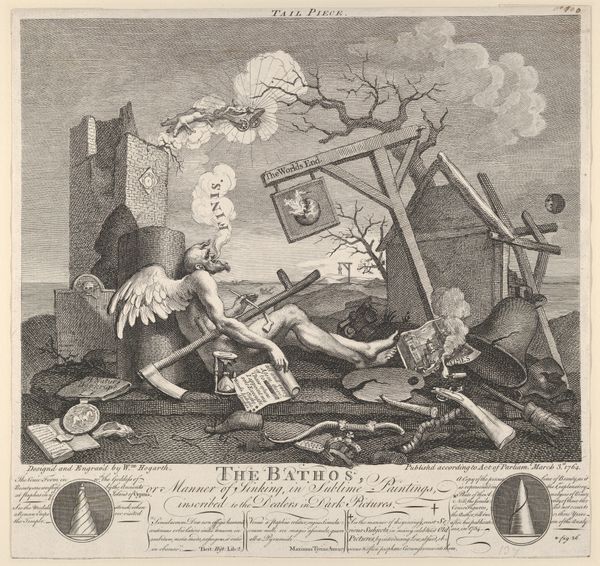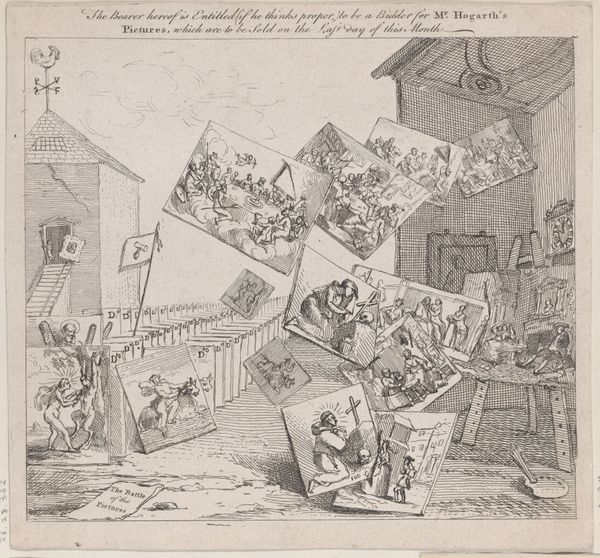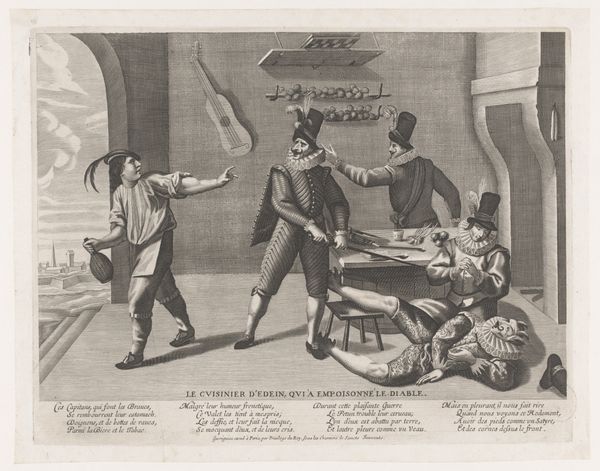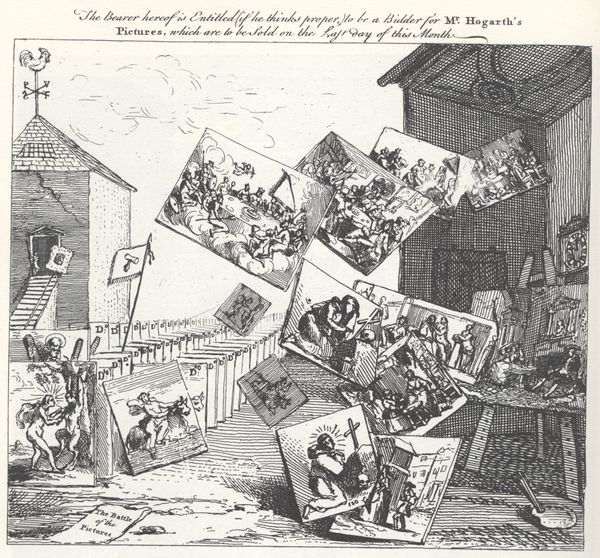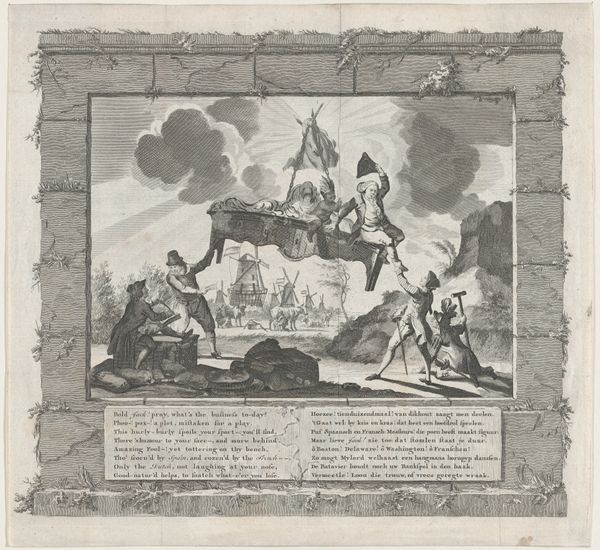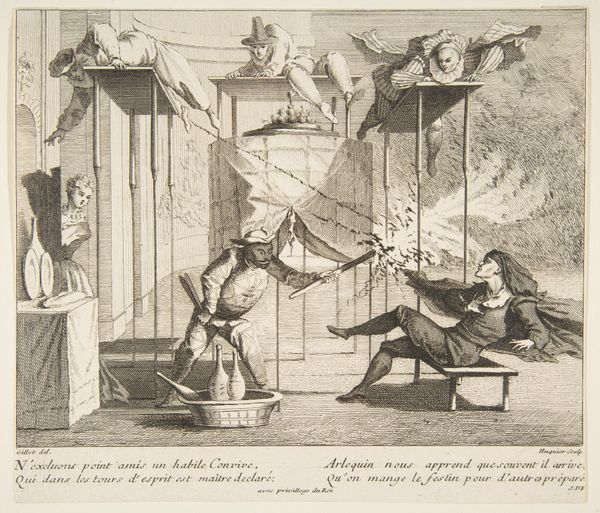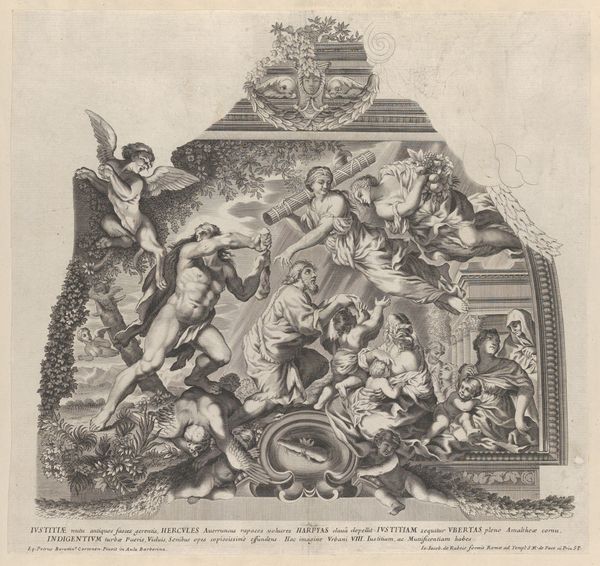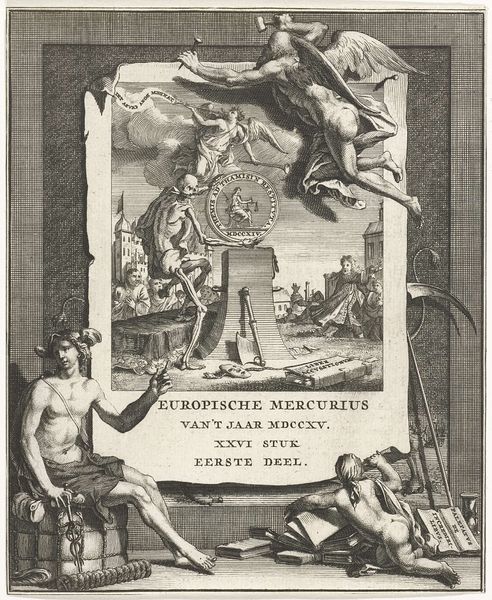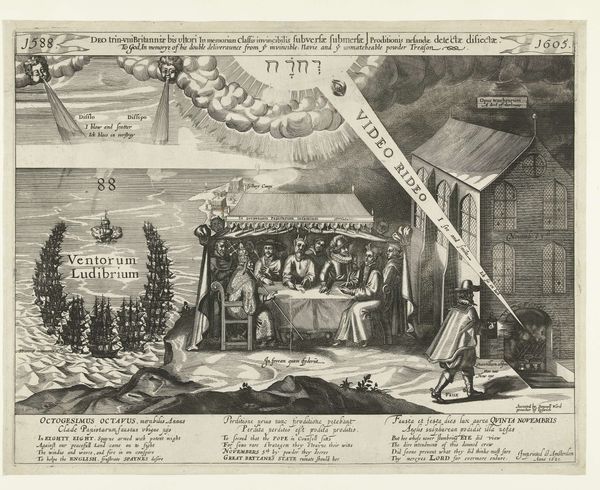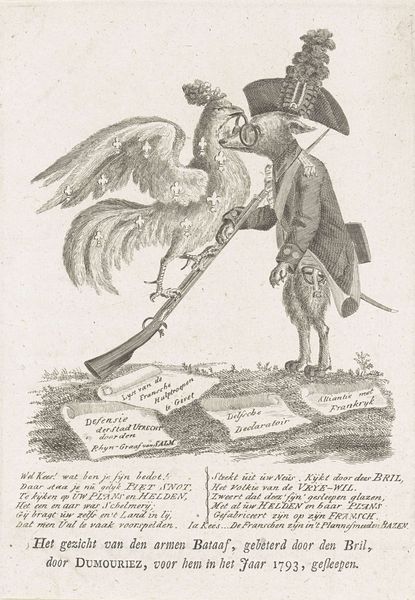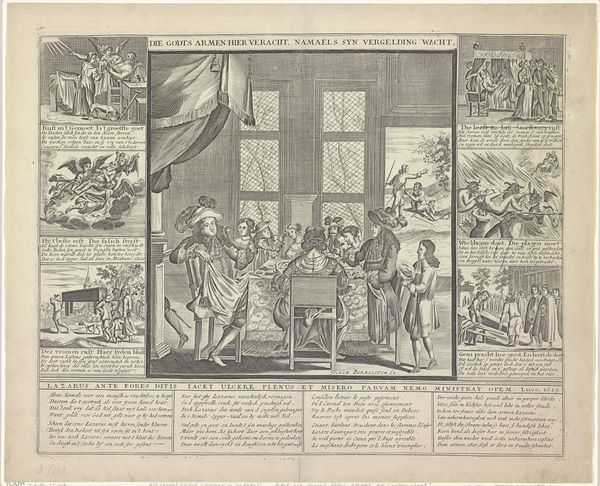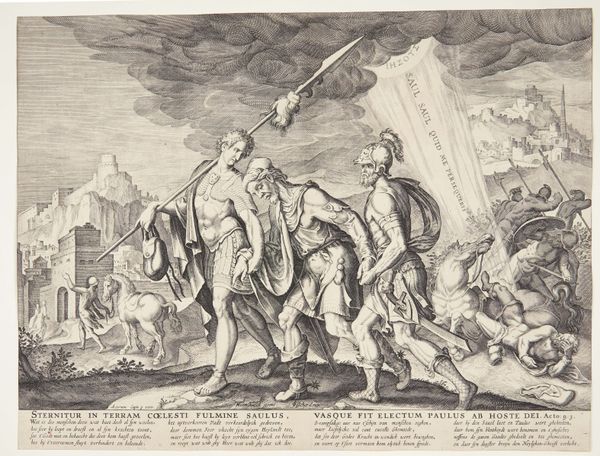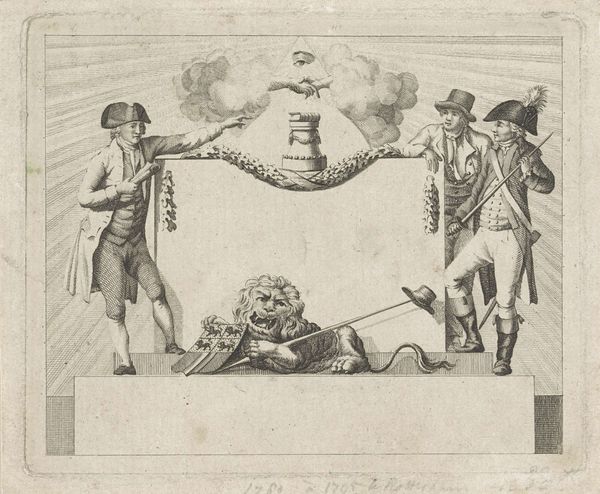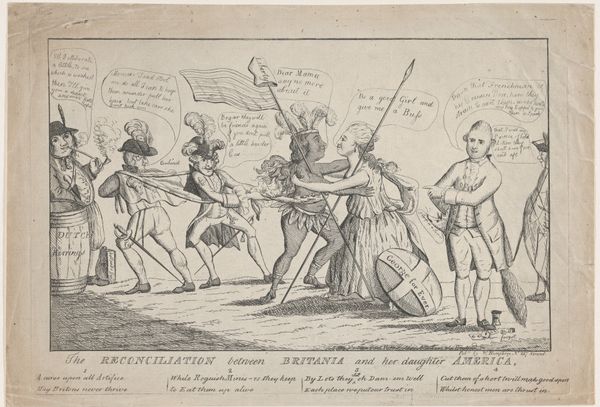
print, engraving
#
allegories
#
allegory
# print
#
caricature
#
history-painting
#
engraving
Copyright: Public domain
Editor: Here we have William Hogarth’s engraving "The Bathos," created in 1764. It's incredibly detailed, but also rather gloomy and pessimistic. I can't quite put my finger on the meaning. What jumps out at you when you look at this print? Curator: For me, "The Bathos" resonates deeply as a symbolic representation of the death of art, specifically history painting, which Hogarth felt had declined into absurdity. Notice how Father Time is collapsed, smoking his pipe, with “Finis” emerging as smoke. This all speaks to the exhaustion of a particular artistic tradition. Editor: I see, the end of a tradition! Is that why there’s a broken tower in the background? Curator: Precisely! Think of the tower as a visual trope for the collapse of ambition, an iconographic marker for ruins and failed legacies. But also consider other elements – like the signpost pointing towards 'The World’s End' bearing an image of the moon - suggestive of lunacy but also dreams. Does this alter how you perceive Time’s weariness? Editor: It does. It's like he’s not just tired but disillusioned, witnessing the descent of art into something absurd and unreal, even dreaming. All these symbols together paint quite a complex picture of artistic demise. Curator: Yes, but also consider how prints, unlike paintings, are easily reproducible. In effect, this allows the ‘death’ of grandiose painting to generate another kind of artistic possibility and social critique via satirical prints. Editor: So it’s a bit like killing one form to create another. Fascinating how Hogarth uses these layers of symbolism to critique and create at the same time! Curator: Indeed. Art constantly transforms, doesn't it? Even endings contain new beginnings, even in the face of apparent cultural exhaustion.
Comments
No comments
Be the first to comment and join the conversation on the ultimate creative platform.
